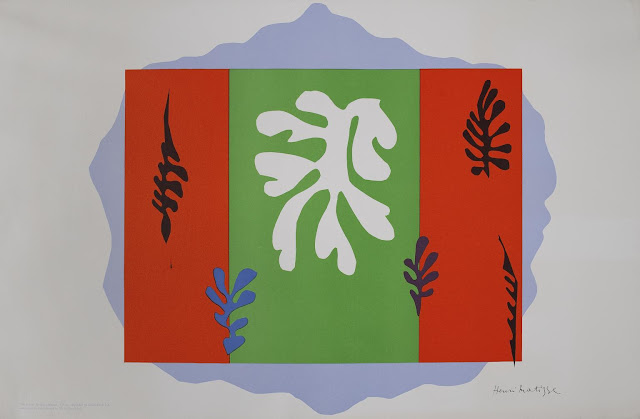 |
| Zsuzsi Roboz Rehearsal at Donmar Studios 1977 lithograph Tate Gallery |
 |
| Zsuzsi Roboz Dancing Figure 1976 lithograph Tate Gallery |
 |
| Zsuzsi Roboz Patricia Ruanne and Nicholas Johnson 1977 lithograph Tate Gallery |
 |
| Henri Matisse The Dancer 1949 lithograph Tate Gallery |
 |
| Lelio Gelli Garden Statue - The Dance ca. 1923-27 photograph Victoria & Albert Museum |
 |
| Harriet Whitney Frishmuth Slavonic Dancer 1921 bronze Metropolitan Museum of Art, New York |
"Frishmuth's sculptures are known for their lively poses, often inspired by professional dancers. For Slavonic Dancer, she collaborated with her model Leon Barté, a member of the Fokine Ballet, who suggested the intensely physical pose. The muscular figure displays fluid surfaces and an active silhouette, with contrasts of curving and angular forms. Slavonic Dancer recalls Auguste Rodin's advice to Frishmuth when she was his pupil in Paris: 'First, always look at the silhouette of a subject and be guided by it; second, remember that movement is the transition from one attitude to another.'"
– curator's notes from the Metropolitan Museum of Art
 |
| George Bellows Dance in a Madhouse 1917 lithograph Metropolitan Museum of Art, New York |
 |
| Childe Hassam The Greek Dance 1916 etching Metropolitan Museum of Art, New York |
 |
| Alexandre Lunois Dancer before 1916 lithograph British Museum |
 |
| Francis Picabia Star Dancer and her School of Dance 1913 watercolor Metropolitan Museum of Art, New York |
 |
| Henri Gaudier-Brzeska Red Stone Dancer ca. 1913 Mansfield stone Tate Gallery |
"Gaudier was born in France but spent most of his tragically brief adult career in London. He was an important pioneer in the revival of carving in sculpture. This sculpture is perhaps his most important work, and demonstrates his use of a more abstract style. The poet Ezra Pound described it as 'almost a thesis of his ideas upon the use of pure form.' It also show's Gaudier's interest in 'primitive' cultures, through artefacts he saw at the British Museum."
– curator's notes from the Tate Gallery
 |
| John Lavery Le Mort du Cygne – Anna Pavlova - 1911 oil on canvas Tate Gallery |
"The celebrated Russian ballerina Ann Pavlova (1882-1931) danced in London with Sergei Diaghilev's company for the first time in the summer of 1910. She caused a sensation. . . . The editor of the Illustrated London News commissioned Lavery to paint a head and shoulders sketch of the dancer, with which the paper advertised her second season at the Palace Theatre the following April. . . . Pavlova returned to London with Diaghilev's company in October 1911 and sittings began for a second composition. This time Lavery chose to paint the ballerina as the dying swan, which was the most famous piece in Pavlova's repertoire. The dancer left London for a provincial tour in November 1911, and so the picture was completed using his wife, Hazel Lavery, as the model, dressed in Pavlova's costume."
– curator's notes from the Tate Gallery
 |
| Spencer Gore Ballet Scene ca. 1903-1906 watercolor Tate Gallery |
"The ballet particularly fascinated Gore, and it formed a regular subject in his art. The critic Frank Rutter, one of his friends, recalled that these pictures were . . . 'Magical paintings dancing with colour and movement, in which – unlike almost every other recent painter of ballets – Gore appeared to be absolutely unconscious that Degas had ever treated similar themes. . . . Degas, giant as he was, viewed the ballet with blasé, cynical eyes; Gore saw it quivering with wonder and delight. Never shall I forget going with him to Covent Garden when he saw the Russian Ballet for the first time. At the fall of the curtain he turned to me, his eyes shining with moisture, and whispered, 'I've often dreamt of such things – but I never thought I should see them.'"
– curator's notes from the Tate Gallery
 |
| J.D. Fergusson Café-Concert des Ambassadeurs 1907 oil on panel Tate Gallery |
"Fergusson was a leading Scottish modernist. His frequent visits to Paris from the 1890s illustrate the close ties between modern Scottish art and French painting. He was one of a group of painters attracted by the bright colours used by the Fauves. Fergusson developed enlarged sketches of café-life like this into finished paintings, which often centred on the figure of a glamorous woman."
– curator's notes from the Tate Gallery